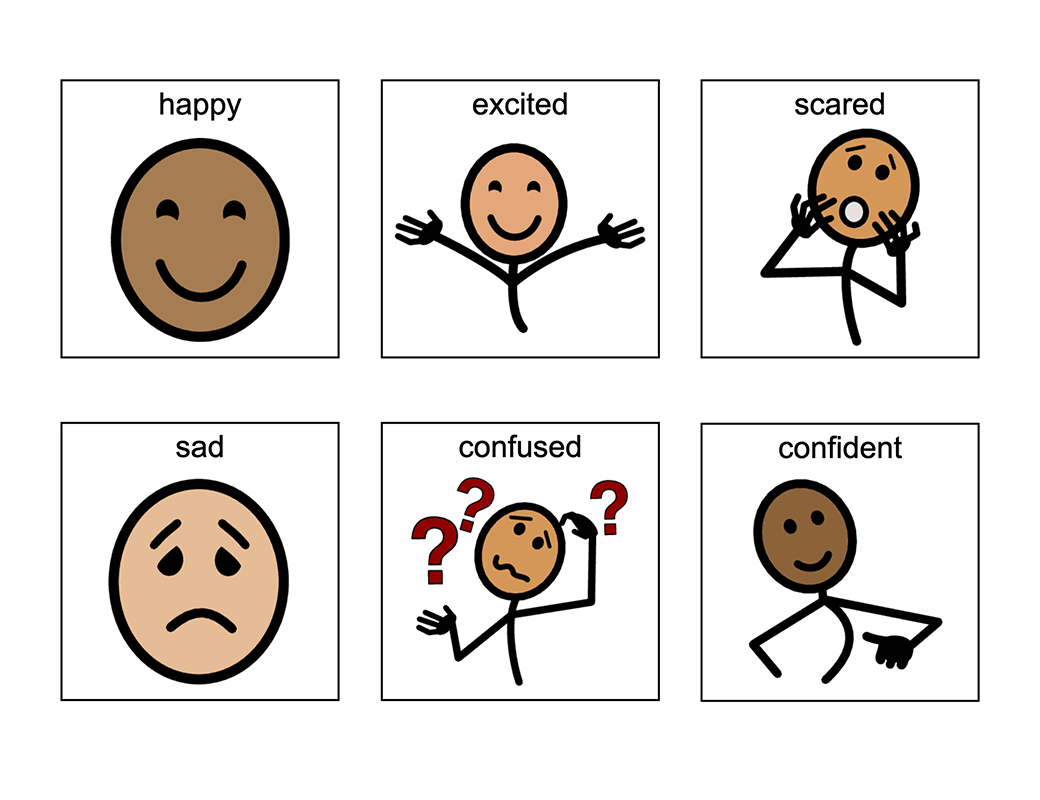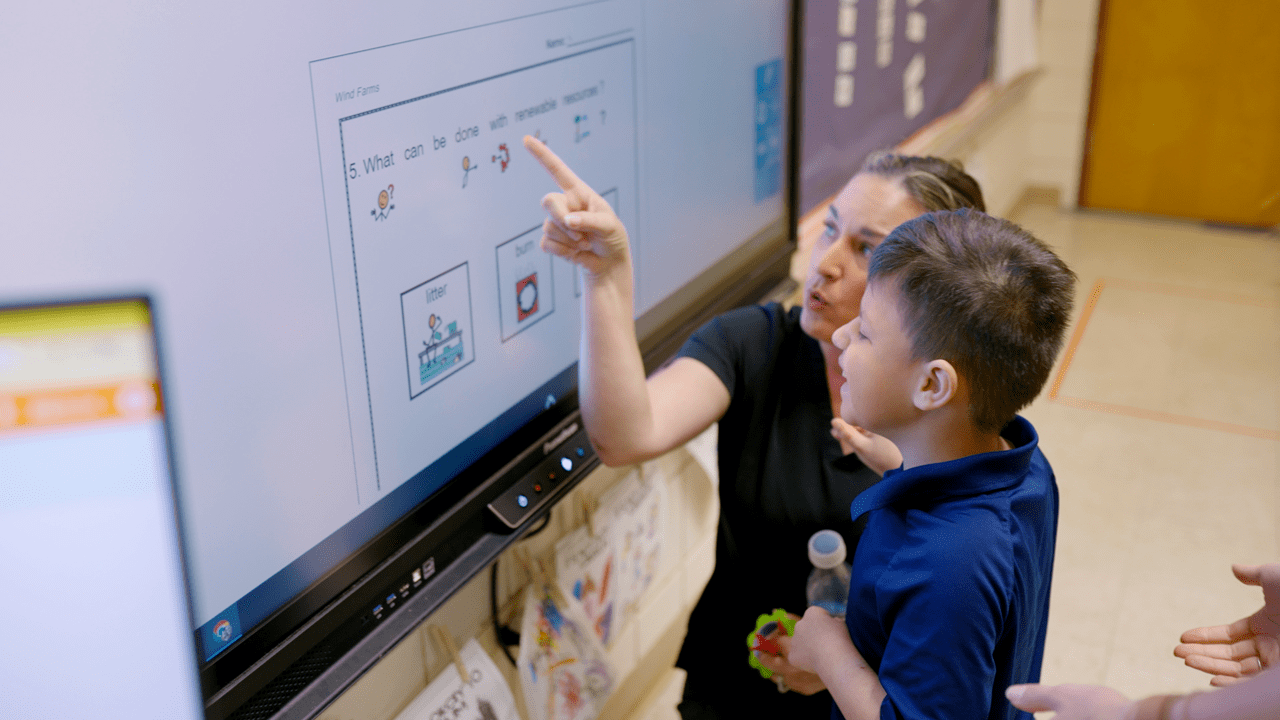Best Practices Before, During, and After an IEP Meeting for Empowering Students
This is the first entry in a four-part blog series, Student Leadership throughout the Individualized Education Program (IEP) Process. You can read more on this topic in these articles in the series:
Progression of Participation
Overcoming Barriers
Self-Determination
Has your student ever attended their own IEP meeting? If so, did you wonder how it felt for them to sit at the table with a group of professionals talking about their strengths, challenges, and goals?
Speaking to a room full of adults might feel intimidating to a student (or to an adult!), but with the right preparation, it can also be a terrific way to build self-advocacy skills. Indeed, as teachers and parents, we must make self-advocacy one of our top goals for our children. Students who understand what kind of support they need and know how to ask for it are well equipped to advocate for themselves later in life. Though students are required by law to be invited to their own IEP meetings starting at age 14, they are allowed to attend at any age—even as young as kindergarten!
Foster Self-Advocacy through Student Participation and Leadership
Student leadership within the IEP process is a trend that has grown in recent years. Special education teams across the country are recognizing the importance of student-led IEPs for all ages. As a result, teachers are inviting students to participate in their meetings, and this is making a big difference. Several studies show that students who learn self-advocacy skills demonstrate greater self-confidence and communication—they practice setting goals and learn to work in teams. Students who learn to lead at their IEP meetings also gain experience in asking for help, expressing their strengths and interests, negotiating, and resolving differences.
There are often questions about how to implement this best practice, though.
- At what age should we start inviting students to meetings?
- How can students with significant disabilities meaningfully participate in their IEP meetings?
- What role does the parent play in the student’s self-advocacy journey?
- How can teachers help students prepare to participate in their IEP meetings?
Student-Led IEP Framework
Student-led IEPs benefit teachers and administrators as well as the students themselves. When students are meaningfully included throughout the process, they are more invested in their learning plans. Increased student motivation often has a direct correlation with improved academic and behavioral outcomes. Relationships with students may improve as teachers demonstrate trust and respect by listening and responding to student feedback.
If your team is new to student-led IEPs, consider this framework:

Before the Meeting: Plan
The work that happens before the IEP meeting takes place is critically important. Teachers and parents must work together to develop a clear plan and provide plenty of opportunities for students to practice. Regardless of how they participate, it is important that the plan is clear and made available to everyone on the team.
Student roles will vary based on age, needs, and abilities. When developing the plan, remember that student-led IEPs exist on a continuum from minimal student involvement to student leadership throughout the entire process. Some students may start by participating through observation only or by introducing each member of the IEP team from a written script:
“Hi, I’m going to say everyone’s names. My name is Matthew, and I am in 5th grade. This is my mom, her name is Lisa. This is Ms. Clarke, she is the speech therapist. This is Mr. Thompson, he is the math teacher.”
Some students will demonstrate early leadership skills by sitting at the table, observing a portion of the meeting, and later reporting back to their teacher what they observed. Other students may practice guided facilitation skills with scripted questions for other members of the IEP team. Older students and/or those who have already participated in multiple IEP meetings may take on additional responsibilities, such as:
- Stating personal interests in and out of school
- Sharing how they have grown in writing this year
- Reading a vocational goals statement prepared in advance
- Explaining work samples that demonstrate mastery of their math goals
Planning with Parents
Months before the IEP meeting is scheduled to take place, the special education teacher or case manager should meet with the student and their parents, who play a critical role on the IEP team and have valuable insights to offer. As you discuss the many benefits of involving the student in the IEP process, consider asking these questions:
- How do you feel about having your child attend their next IEP meeting?
- How do you think your child will feel about attending their own IEP meeting?
- What are some ways you have successfully met your child’s needs at home?
- What kinds of supports do you offer your child when they feel nervous?
- How do you celebrate with your child?
- Would you be willing to practice with your child at home before the meeting?
Once consultation has occurred with the parent, offer an idea for how you think their child would best participate in the next meeting. Share your proposed plan with the parents and consider any feedback they may suggest.
Planning with Students
When students are included in the planning stage, they are invested in the work that it will take to reach their goals. For students who are brand new to special education, a good place to start is working with the student to understand their disability. There is no need to hide or shy away from talking about the disability. The student faces the challenges of the disability daily, so it won’t be a surprise to them. Knowledge is empowering when learning how to overcome barriers of one’s disability.
Keep in mind what a student is reasonably able to internalize and work on at one time. For example, it’s probably too much for a student to learn in one day that they have Attention Deficit/Hyperactivity Disorder (ADHD) and also try to identify accommodations that will help them sustain attention in class.
Consider these strategies:
- When planning with the student, try to set specific goals about what will be said or done.
- Create a student planning document using sentence starters, pictures, or symbols to help clarify the goal.
- Another tool to consider is a rubric. Though students will not be formally graded on their advocacy skills at their IEP meeting, it may be helpful to develop a rubric so they can see their growth over time.
Planning with the Whole IEP Team
As you prepare your student to participate in the IEP meeting, consider the work that other members of the IEP team are doing in the area of self-advocacy. Consult general and special education teachers, related service providers, administrators, and others.
You might ask:
- Has the student made noteworthy progress in your content/therapy area?
- How are you helping them understand that progress in a way they can share with the team?
- Is the student struggling in your content/therapy area?
- What kinds of accommodations are working well?
- Have you tried any accommodations that have not been successful?
Before the Meeting: Practice
Once the plan has been established, it is time to practice! The special education teacher or case manager will need to find time to practice with the student. This can be accomplished in several ways.
- Practice sessions could be during a study hall or lunch period, part of a social-emotional learning (SEL) lesson, during an inclusion class small group, or at any other time the teacher identifies.
- Try working with a small group of students who share overlapping self-advocacy goals, such as reflecting on strengths, appropriately expressing emotions, and building coping skills.
- Schools that are operating remotely can use breakout rooms online to have individual or small-group time with students to practice together.
Remember, give the student plenty of time to practice their role before the actual meeting—this usually means at least two different practice sessions, and sometimes more. When practicing with your student, think about the services they need to be successful in the classroom. Remember to set up the student for success at the IEP meeting and provide them with the accommodations they need to fully participate.
Additional Option for Empowerment: Practicing a Specific Leadership Skill
Many kinds of leadership skills empower students to self-advocate. Choose a skill area that meets the student at their level in terms of age, ability, readiness, and needs. Focus on just one self-advocacy skill at a time, and practice through role-play, social stories, and scripts. This will relieve some of the stress and anxiety they may be feeling and provide an opportunity for them to ask questions.
Here are a few possible skill areas:
- Introducing others
- Using a clear voice
- Respectful observation
- Sharing a personal strength
- Reflecting upon a lack of progress
- Asking questions
- Facilitating discussion
- Disagreeing appropriately
During the Meeting: Implementation
The implementation phase is when the student participates in the scheduled IEP meeting. The day of a scheduled IEP meeting may be full of emotions! Students will probably be both nervous and excited and other members of the IEP team may feel unsure about the process if they have never experienced a student-led IEP before. That’s okay! If you’re the adult in charge of facilitating the meeting, do your best to model calm confidence and establish an inviting, warm environment. For example, greet your student with warmth and excitement. It’s normal to feel a little nervous before a big event, so remember to shower your student with extra encouragement and affirmation.
“I’m looking forward to our time together today to talk about your great progress! You have worked so hard in class and our practice meetings—you’re ready!”
The student will feel reassured to see their teachers, therapists, and other familiar faces smiling and happy to see them. It’s also a best practice to provide a student-friendly checklist or outline so your student knows exactly what to expect and can easily follow along. This will also be great for parents!
As the meeting progresses, try to stick to the plan as much as is reasonably possible. Students of all ages respond well to routines and clear expectations. This is especially true for students with special needs. Be ready to assist if your student has difficulty when it’s their turn to share. Remember, this isn’t a formal assessment. It’s a chance for them to learn about themselves and practice advocating. Sometimes, the best way to advocate for oneself is to ask for help.
After the Meeting: Reflection
After the meeting concludes, plan to debrief the process with your student in a way that feels relaxing and comfortable. Ideally, the debrief will take place immediately after the meeting or soon thereafter. Invite parents to the debrief as well!
The work of developing self-advocacy and leadership at IEP meetings doesn’t stop once the IEP meeting concludes. Debriefing and reflection are important parts of the learning process. If possible, try to meet with the student shortly after the meeting, or within one day. Students may have a hard time reflecting upon their feelings several days or weeks after it occurred. Depending on the student’s age and ability level, you may ask them to complete a written reflection, choose symbols that match how they feel about the meeting, or hold a verbal debrief.
Consider a few of these prompts as you plan the reflection time:
-
- Circle the picture(s) that match how you felt about joining the meeting today.

- How did you feel after you shared your progress in reading this quarter?
- Was there anything that seemed confusing or scary about the IEP meeting?
- Did your practice sessions prepare you for the meeting?
- What was one thing you enjoyed about leading your part of the meeting?
- How might you like to participate in your next meeting?
During the debrief, take time to reflect on how the meeting felt to the student. Be specific about what went well, and celebrate! If something did not go well, it’s important to discuss that, too. You may find it helpful to apply the idea of “One Next Step” to the debrief conversation. With your student, choose one single takeaway to apply to the student’s self-advocacy journey in the classroom environment.
For example, your student now has access to noise-canceling headphones during independent work time in their inclusion classes to help maintain focus on the task at hand. To help them self-advocate when they are feeling distracted, you could design a visual tracker/chart that they can manage themselves. They could color in one block on their chart, or place a smiley face in the box (for example) next to each time they ask to use noise-canceling headphones during independent work time.
Reflection isn’t only for the student. If you are the special education teacher or case manager who took primary ownership of preparing the student, consider how you felt about the whole process. Make a note of what worked well and what you’d like to change for the next meeting. If you are feeling particularly proud of your student’s self-advocacy, be sure to celebrate their success!
Learning to Advocate Is an Ongoing Process
Teaching students to advocate for themselves is an ongoing process. The IEP meeting is just one part. Before the meeting come weeks and months of planning, data analysis, and writing. After the meeting come implementation and progress monitoring. Developing student-led IEPs is a year-long endeavor with a heightened focus in the timeframe leading up to the IEP meeting. With appropriate preparation, students of all ages and ability levels can participate in meaningful ways. Active participation and other forms of leadership build self-confidence, communication, and other important lifelong self-advocacy skills.
What’s Next
Stay tuned for the next article in our series—The Progression of Participation. We all start somewhere, right? The same is true for our students who are learning to advocate throughout the IEP process. Our next article details the different levels students move through as they learn to lead. Students begin with observation and basic IEP awareness and eventually learn to identify strengths, set goals, offer suggestions, and hold conversations with other team members.



